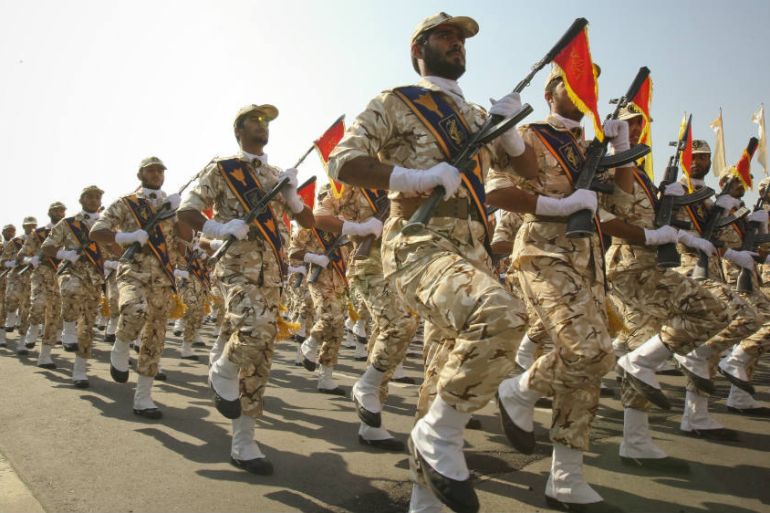New report reveals extent of Iran’s growing Middle East influence
Iran’s sway in the region is increasing despite renewed US sanctions and a failing nuclear deal, think-tank says.

Iran‘s influence and strategic capabilities in the Middle East are increasing despite the reimposition of crippling US sanctions and a faltering nuclear deal with world powers, a new report has said.
The Islamic Republic’s ability to “fight by, with and through third parties” in countries such as Syria, Lebanon, Iraq, and Yemen has contributed to Iran’s regional impact, a study by the London-based International Institute for Strategic Studies (IISS) found.
Keep reading
list of 3 itemsNuclear deal crumbles: Iran steps away from landmark pact
US puts new sanctions on Iranian supreme leader’s inner circle
This has brought Iran more regional influence and status than its nuclear and ballistic missile programmes, according to the 217-page report titled Iran’s Networks of Influence in the Middle East.
Iran has expanded its ideology and influence since 1979, which has granted it strategic depth in the region – more so than its traditional rivals, including the United States.
The report said no state has been as effective as Iran in regional conflicts during the past decade, especially with the Islamic Revolutionary Guard Corps’ Quds Force.
“Iran’s lack of state allies, a plethora of well-resourced regional and international adversaries, and antiquated and sanctions-constrained armed forces compelled Tehran to develop a military doctrine that avoided direct or extended conflict with superior conventional powers,” it said.
The advantages came despite domestic unrest.
|
|
Last year, Iran witnessed a wave of protests and discontent as its economy continues to suffer from years of economic sanctions.
Social and economic inequality pushed tens of thousands of Iranians across the country to rally over the rising cost of living, and against the policies of a religious-political system that has ruled Iran for more than 30 years.
Iranians blamed the government for being involved in conflicts beyond the nation’s borders, but this has not forced the ruling elite to change regional policies.
For many Iranians, the 2015 nuclear deal signed with world powers was meant to bring economic relief through the relaxation of punishing sanctions.
But today, Iran has distanced itself from the historic deal more than ever before. It has taken significant steps in reducing its commitments to the deal by injecting uranium gas into more than 1,000 centrifuges at its underground Fordow plant.
The nuclear accord – signed in 2015 by Iran, the United Kingdom, the US, France, Germany, China and Russia – bans nuclear activity at Fordow, a plant located near the northern city of Qom, and capped the level of purity uranium can be enriched at 3.67 percent – suitable for civilian power generation and far below the 90 percent threshold of nuclear-weapons grade.
Before the deal, Iran used Fordow to enrich uranium to 20 percent fissile purity. Officials have said Tehran could again reach that level but they will hold off for now.
With the injection of uranium gas into its centrifuges, Fordow will move from its permitted status as a research plant to an active nuclear site.